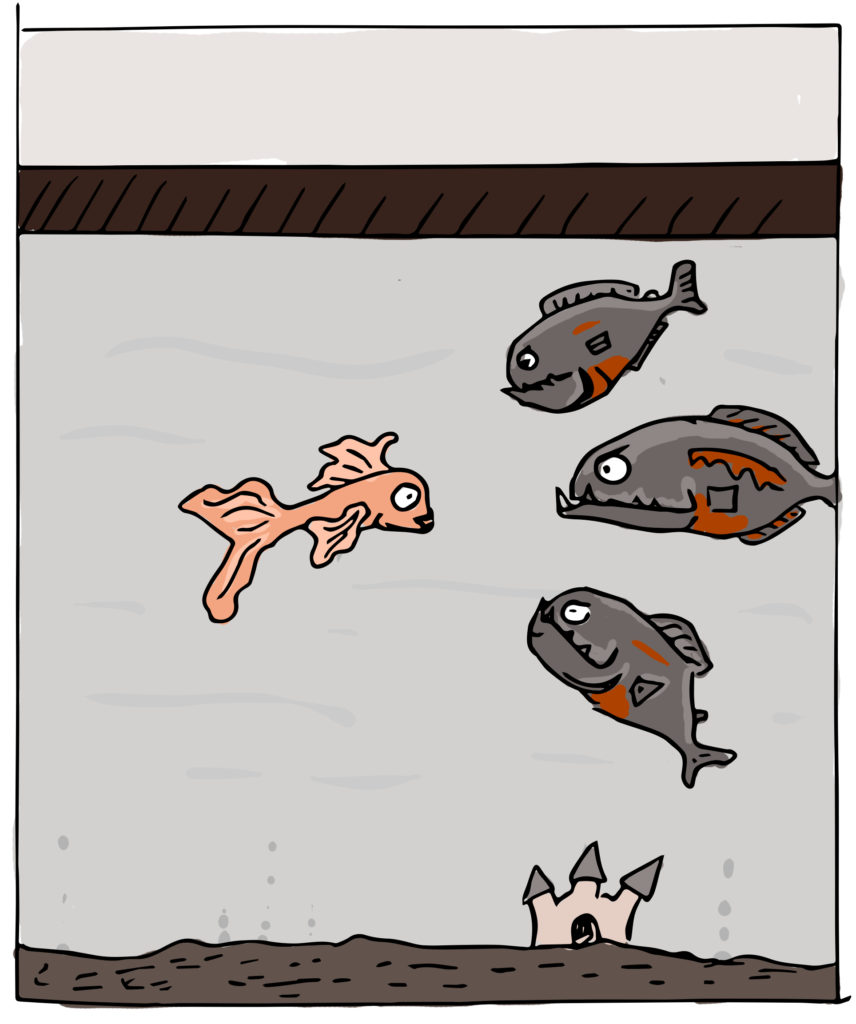How to Survive a Piranha Attack
In this short article you’ll learn the basics of piranha behavior and ecology so that you can learn how to avoid the unlikely run-in with this toothed predatory fish. I have compiled scenarios to avoid and best practices for avoiding a piranha attack. If you want to listen to this story, I’ve recorded a version of this to make it accessible to more people (scroll down to the bottom).

How this fascination with piranha began
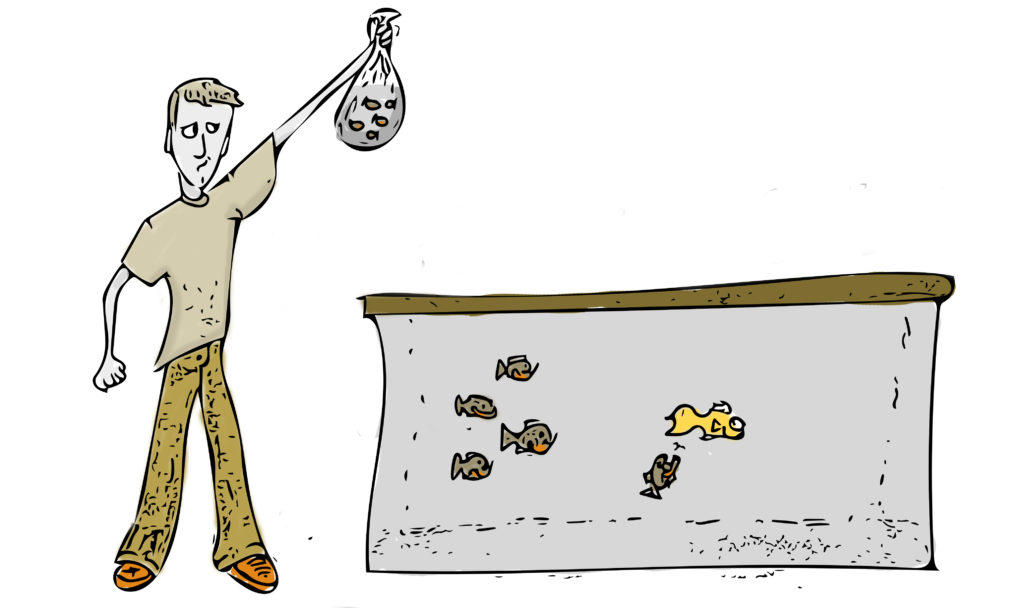
At 16, I bought six piranha to raise in a 100 gallon freshwater aquarium. In my weird world, that seemed to be the coolest thing I could do as a high schooler. Every time I fed them, I got to see the hunting behavior of these amazing fish. As I put in a goldfish, they’d gradually all get more and more excited. The goldfish always seemed to be oblivious to what was happening around it.
One piranha would start by taking out the tail-fin. The next few piranha would take the other fins. After that the gut. Quickly at this point, they’d all go in for a bite. It was not a feeding frenzy – it was a precision attack to take out this poor goldfish. Full disclosure, it made me sick the first time. I probably wouldn’t do this today simply because I prefer to see them in their natural habitats, but I credit this experience for beginning a life-long passion for fish, behavior, and ultimately awe-inspiring creatures.
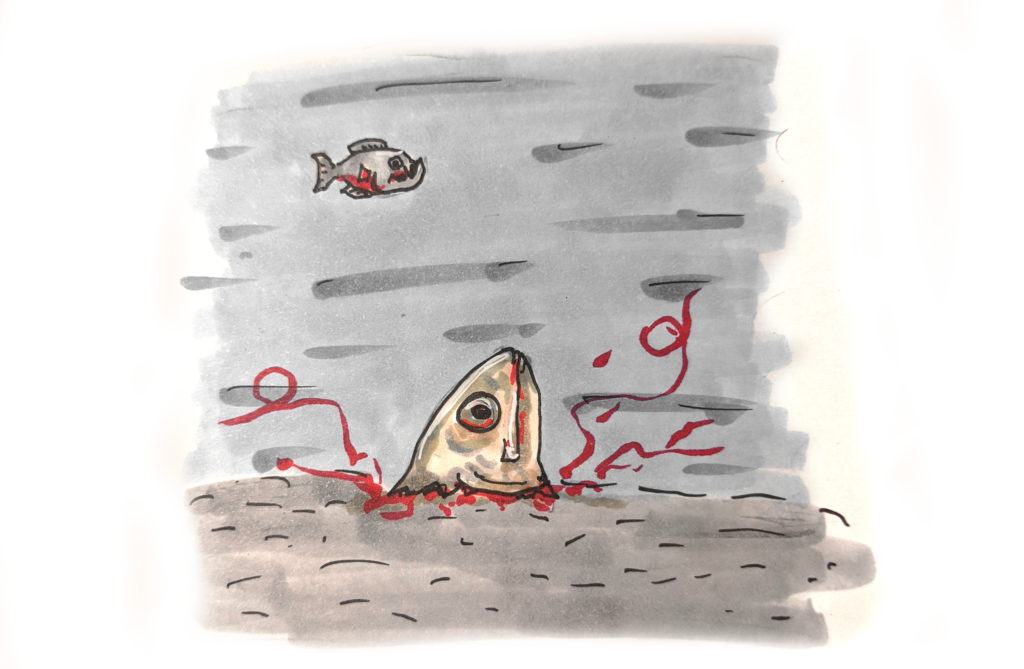
If you watch old movies, you may remember scenes of jungle explorers walking through tropical rivers, only to get attacked by blood-thirsty killer piranha. There is even a Bond-villain who uses a tank of piranha to devour his enemies in seconds.
However, if you are not a villain with dreams of fish-murder – you’ll be happy to know that piranha are not the blood-thirsty killers that the movies make them out to be. Having raised my own, I should know. Watching and caring for them let me see their complex behaviors. They’re close to my heart as far as “dangerous” species go, so I’m excited to give you a closer look at the behavior and biology of the piranha.
And make no mistake due to my affection for them, piranhas do bite – and with razor sharp teeth. Fortunately, people get bitten only rarely. In this section you’ll get the tools to understand why a bite might happen and what you can do to prevent it.
The Piranha Basics
There are actually many different species of piranha. Depending on the way you classify them, it’s between about 30 and 60 species. Most are omnivores, eating a mixture of fruit and meat. Some eat only plants.
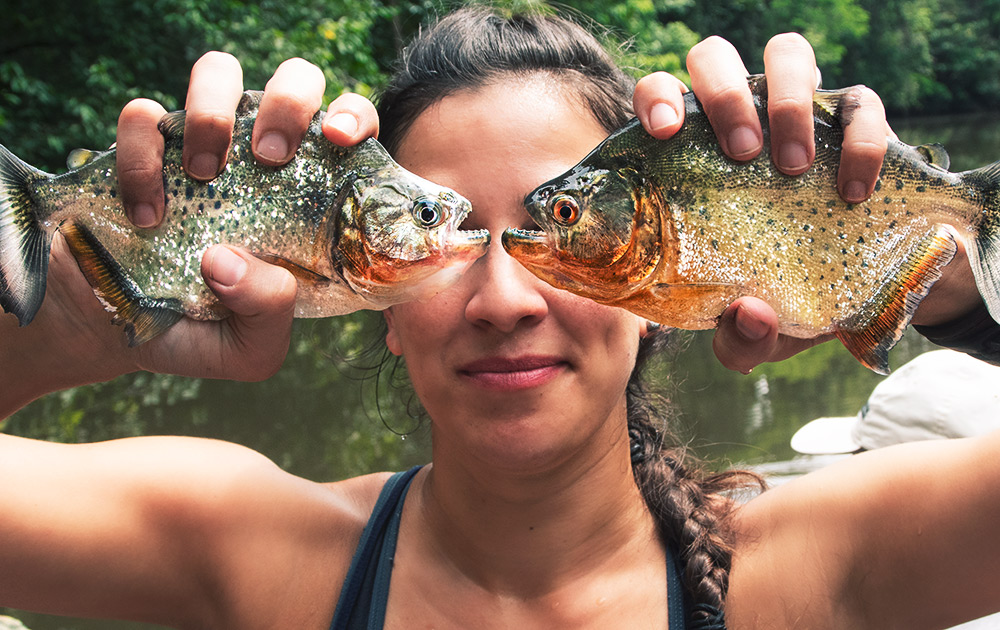
They all evolved and currently thrive in the tropical waters of South America. In fact, each river basin may have its own unique piranha species. They’re not sharp-toothed eating machines that indiscriminately tear apart any living flesh. They are highly adapted to their own river basin and unique food source – and can discern their natural food source from something foreign, like a human. So what does that mean for you?
Let’s get down to brass tacks. If you’re on a trip to the Amazon, I’m sure you’re going to wonder how dangerous it is to swim in the river. I mean, piranhas are very abundant in most waterways. If you stick a piece of bloody meat in the water, you’re almost certain to pull out a piranha on every cast. But here’s the thing – they almost never bite people.
This was also my experience with the piranhas in my fish tank. If I had to clean the tank, I’d put my hand in and scrub around. They would cower on the other side of the tank. But when I threw in a piece of meat, they’d jump into action. That’s because they’re highly adapted to distinguishing between food and foe in their ecosystem. They’re very acute predators but also the prey to other animals like crocodiles, herons, and other large fish. Essentially, they don’t want to get killed as much as we don’t want to get bitten.
That being said, they have a lot going for them when they do decide to chow down. Piranha have brilliantly adapted teeth and jaws. A piranha’s teeth are triangular and sharp so as to tear through flesh. They lose their teeth on occasion and new teeth will grow in their place. The jaws are powerful and interlocking. In fact, the black piranha’s bite force has been measured at 72 pounds per square inch. To put that in perspective, if you were to scale up a piranha to the size of a great white shark, it would be almost 30 times stronger than the shark.
Their teeth are pointy, sharp and can bite through steel wire. They can also easily bite off a finger. This makes it especially tricky when fishing for piranha. Your fleshy thumbs are dangerously close to very sharp teeth every time you need to remove the hook from the mouth.
But what if you’re not fishing? What if you just want to go swimming? Well it turns out piranha are really only dangerous when certain conditions make them dangerous. Let’s delve into those conditions and how to avoid them.
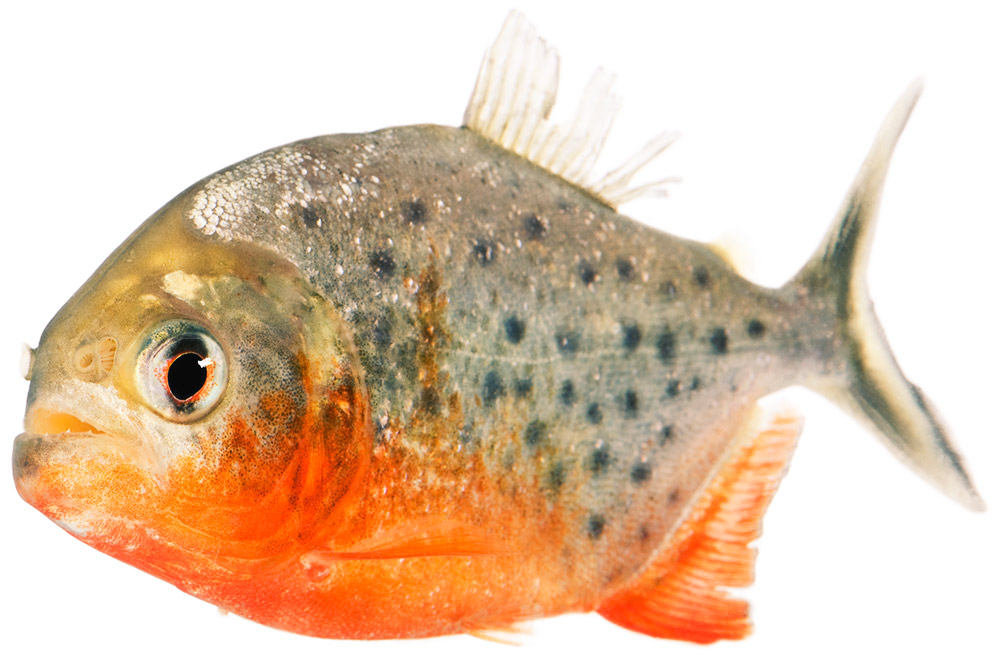
Scenarios to Avoid with Piranha
Don’t swim in small bodies of water in the Amazonian dry season. In the Amazon, the rains flood great expanses of rainforest for part of the year – the wet season. The water covers the forest and provides a lot of new habitat and potential food for piranha like fruit, nuts, small mammals, dead carrion and small crustaceans. As the water dries up during the dry season, bodies of water shrink and concentrate large numbers of piranha in smaller areas. As food sources get depleted, they end up very hungry and willing to try new food.
Don’t enter the water with cuts or open wounds. This is also a safety protocol for being in tropical locations. Bacteria in the water can be even more dangerous than the piranha.
Don’t swim near active fishing or fish cleaning activities. Piranha are easy to catch and delicious. It’s just common sense to avoid swimming in an area where people are actively trying to get the fish to bite!
Try not to thrash around in the water. Piranha are attracted to this type of behavior in the same way sharks are.

The Most Dangerous Piranha
The red-bellied piranha is known as the most dangerous in part because it’s the most abundant and that it is usually found in groups.
The black piranha is the largest and has the most powerful bite. It can devour carcasses quickly, if given the chance.
The largest piranha attack ever recorded was neither of these. It was Christmas Day 2013 on the Parana River in Argentina. The temperature was almost 100 degrees, so bathers were in the water trying to keep cool. That’s when a feeding frenzy took place. Over 70 people were bitten by piranha as they scrambled to get out. A seven year old girl lost part of a finger. We’re still not sure exactly what caused the frenzy. Possibly it was one drop of blood in the water and a bunch of hungry fish – hard to say. In that case, the spectacled piranha was to blame.
How to Survive a Piranha Attack?
Almost always attacks by piranha are simply a single bite. However, a single bite can draw a lot of blood and more piranha quickly swim in. That means you need to:
- Get out of the water as quickly as possible if you’ve been bitten.
- Signal for others in the area to get out.
- Seek first aid for your bites as soon as possible.
The take home:
It’s important to know that people in the Amazon live in relative peace with piranha on a daily basis. They eat them (again, delicious), swim in the river with them, and use their teeth as powerful cutting instruments in a part of the world that doesn’t have many stones or other natural products for cutting. My wife and I relish our visits to the Amazon, and we have noticed that any fear of piranha is something foreigners bring with them from Hollywood portrayals onscreen – never from the locals. These sensational stories paint a very biased view of these remarkable and well adapted fish. We can be safe around piranha and respect their abilities at the same time!
Prefer to Listen to this Piranha story?
I recorded the following audio to make the research I did here more accessible to the public.
